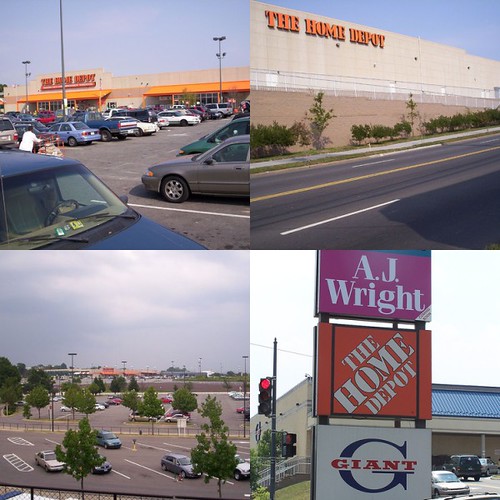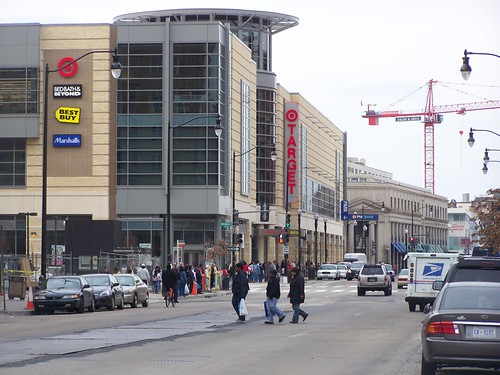National office of sustainable communities created at HUD but ...
In the run up to the inauguration, post-Obama winning the election in 2008, I wrote about how the US Department of Housing and Urban Development should be reconfigured as a Department of Cities, Regions, and Urban Ecology (Sustainability). See "How will Obama relate to the District?"
So it is exciting to see how HUD is moving in that direction, based on the announcement yesterday in Portland, Oregon as reported in the Oregonian, "HUD chief comes to Portland to unveil sustainable community program."
While this Seattle Post Intelligencer column, "As suburbs reach limit, people are moving back to the cities," discusses how great it is that HUD is seeking out innovative thinking from cities, instead of just saying what matters--on the ground I do see some real issues. From the article:
We are trying to reassert federal leadership and support, but do it in a way that is not one-size fits all: We're trying to reassert a federal presence, but as partnership," Donovan said in an interview.
Normally, announcement of the $100 million in grants would be followed by a NOFA (Notice of Funding Availability). Instead, said Donovan, this time there will be a request for comment from localities.
"We want to hear from local innovators what they need," he added.
However, I think that the level of innovative thinking in many places, at least within municipal governments, is likely to be found wanting. At least that is my sense here.
Many municipal governments define what they are doing as "world class" whether or not it is. The challenge will be to reformulate how municipal economic development and housing and community development operations function, and how much they embrace (or not) transformation and innovation.
Giving tax incentives to a big box store as is isn't usually economic development, or at least, it's not what I call "building a local economy."
However, it is possible to integrate this kind of development more broadly as part of a thorough and complete plan to revitalize an area.
I didn't used to believe that but I continue to learn and continue to embrace nuance...
The development at Rhode Island Place of the Giant Supermarket and Home Depot shows the failure of single use places. It's horrid. And it completely ignores the proximity of the subway.

Rhode Island Place, northeast DC. Note that the parking lot shown in the bottom left photo is actually the parking lot associated with the subway station.
Had the development been conceived of as a way to extend urbanism and urbanity, those stores could have been integrated into the development as part of an overall mixed use center, with housing and other uses, in a manner that leveraged transit access.
I was originally "against" the creation of the DC/USA development, which plops a bunch of "big box" stores into Columbia Heights. I was wrong.
While that specific property could have been developed better, to include other things such as movie theaters and even housing on top, fortunately, other complementary development of multiunit housing--mostly with ground floor retail--on multiple parcels surrounding the development provides a kind of "horizontal" mixed use in the area, even if not every property has been redeveloped in the manner that I would have suggested.

Now the development in that area isn't perfect. First, there is the circumscribed development of DC/USA. Plus the inclusion of a massive parking structure at great economic cost that is mostly un-used, and the failure to provide shared delivery services and to leverage transit service. (I was one of a handful of people who challenged the funding of the parking structure at the time, to no avail.)
But the real failure is not having planned the idea of "horizontal mixed use" better. Because of the relative paucity of developable land "inventory" there is no room to add much more in the way of retail and entertainment, to continue to grow the commercial district, so that it will have "legs" and can continue to be refreshed and improved to be able to remain competitive in the regional retail landscape where there are many destinations that compete for the same customers.
Second was the failure to invest more into the more organic commercial districts around this area--Mount Pleasant, and the adjoining commercial district north on 14th Street, as well as on 11th Street--in order to leverage the shopping attraction of the retail chains in a manner that also drives customers to the smaller commercial districts typified by locations in commercial rowhouses and other historic (eligible but not designated) building stock.

Converted rowhouse commercial buildings north of DC/USA and the Tivoli Building on 14th Street NW.
In short, I am thinking that many cities responding to HUD's call for innovative ideas will come back with places like Rhode Island Place as their example of best practice.
We have a long way to go.
But it's amazing to see the changes that are happening nonetheless.
Labels: building a local economy, change-innovation-transformation, economic development, federal policies and the city, progressive urban political agenda, urban design/placemaking, urban revitalization



0 Comments:
Post a Comment
<< Home